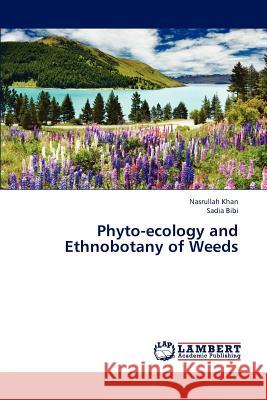Phyto-ecology and Ethnobotany of Weeds » książka
Phyto-ecology and Ethnobotany of Weeds
ISBN-13: 9783846586105 / Angielski / Miękka / 2012 / 156 str.
We studied the phyto-ecology and ethnobotany of inter-cropping weeds in wheat crop. The study was conducted in three different agro-systems i.e. Moist, Irrigated and Arid. A total of 53 species belonging to 43 genera and 24 families were recorded. The cluster analysis agglomerated 53 species into six major groups which were linked to certain topographic, edaphic and environmental variables. However, the ordination procedure did not exposed the trend prevailing in the vegetation structure as none of the environmental variable exhibited significant relationship with the ordination axes. The ordination showed strong overlapping among the groups obtained from cluster analysis due to similarity in vegetation composition. Absolute values like density/ha and cover/ha were obtained for individual species. In addition, the ethno-botanical information of weeds were recorded through a questionnaire and a database of the respondents were summarized. The results revealed that a number of species are used by the local inhabitants for various ailments. Species like Artemisia, Cannabis and Fumaria were most important species with medicinal properties.
We studied the phyto-ecology and ethnobotany of inter-cropping weeds in wheat crop. The study was conducted in three different agro-systems i.e. Moist, Irrigated and Arid. A total of 53 species belonging to 43 genera and 24 families were recorded. The cluster analysis agglomerated 53 species into six major groups which were linked to certain topographic, edaphic and environmental variables. However, the ordination procedure did not exposed the trend prevailing in the vegetation structure as none of the environmental variable exhibited significant relationship with the ordination axes. The ordination showed strong overlapping among the groups obtained from cluster analysis due to similarity in vegetation composition. Absolute values like density/ha and cover/ha were obtained for individual species. In addition, the ethno-botanical information of weeds were recorded through a questionnaire and a database of the respondents were summarized. The results revealed that a number of species are used by the local inhabitants for various ailments. Species like Artemisia, Cannabis and Fumaria were most important species with medicinal properties.











